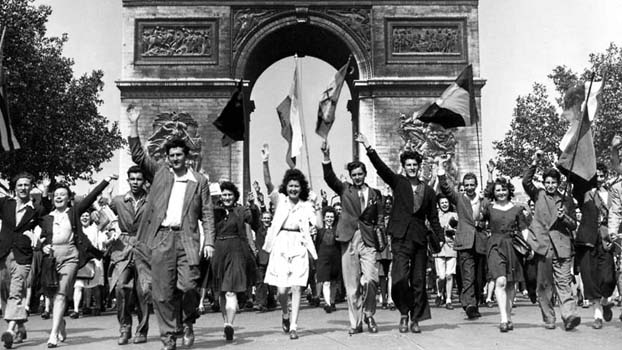This Day in History
WWII: Liberation of Paris

After defeating the German forces in Normandy, Allied armies rushed through France, trying to catch up retreating German troops. The liberation of Paris didn’t have priority, also because the risk of damaging the town. On 19 August 1944 however, the French resistance caused an uprising in Paris against the Germans. The German commander of Paris, Lieutenant-General Choltitz, was ordered to crush the insurrection and to destroy the city, as the Germans did in Warsaw.
To prevent this disaster, Charles de Gaulle insisted to interfere. Allied Command sent in Major-General Leclerc’s 2nd French Armored Division, supported by the U.S. 4th Infantry Division of Major-General Barton. A first group managed to infiltrate into the heart of Paris on the evening of 24 August.
On 25 August, the French and American forces were warmly welcomed by the Parisians. Choltitz and his staff were captured at the Meurice Hotel. The capitulation was signed at the Police Department on the Île de la Cité. After that, Choltitz was taken to the Montparnasse train station from where he ordered his troops to surrender. The next day, cheered by countless people, de Gaulle led the triumphal parade on the Champs-Élysées. France regained its national unity and sovereignty.
The liberation began when the French Forces of the Interior—the military structure of the French Resistance—staged an uprising against the German garrison upon the approach of the US Third Army, led by General George Patton.
All over France, from the BBC and the Radiodiffusion nationale (the Free French broadcaster) the population knew of the Allies' advance toward Paris after the end of the battle of Normandy. RN had been in the hands of the Vichy propaganda minister, Philippe Henriot, since November 1942 until de Gaulle took it over in the Ordonnance (he signed in Algiers on 4 April 1944).
On 19 August, continuing their retreat eastwards, columns of German vehicles moved down the Champs Élysées. Posters calling citizens to arm had previously been pasted on walls by FFI members. These posters called for a general mobilization of the Parisians, arguing that "the war continues"; they called on the Parisian police, the Republican Guard, the Gendarmerie, the Garde Mobile, the Groupe mobile de réserve (the police units replacing the army), and patriotic Frenchmen ("all men from 18 to 50 able to carry a weapon") to join "the struggle against the invader".
Other posters assured that "victory is near" and promised "chastisement for the traitors", i.e. Vichy loyalists, and collaborators. The posters were signed by the "Parisian Committee of the Liberation", in agreement with the Provisional Government of the French Republic, and under the orders of "Regional Chief Colonel Rol" (Henri Rol-Tanguy), the commander of the French Forces of the Interior in the Île de France region.
—Liberation Route




